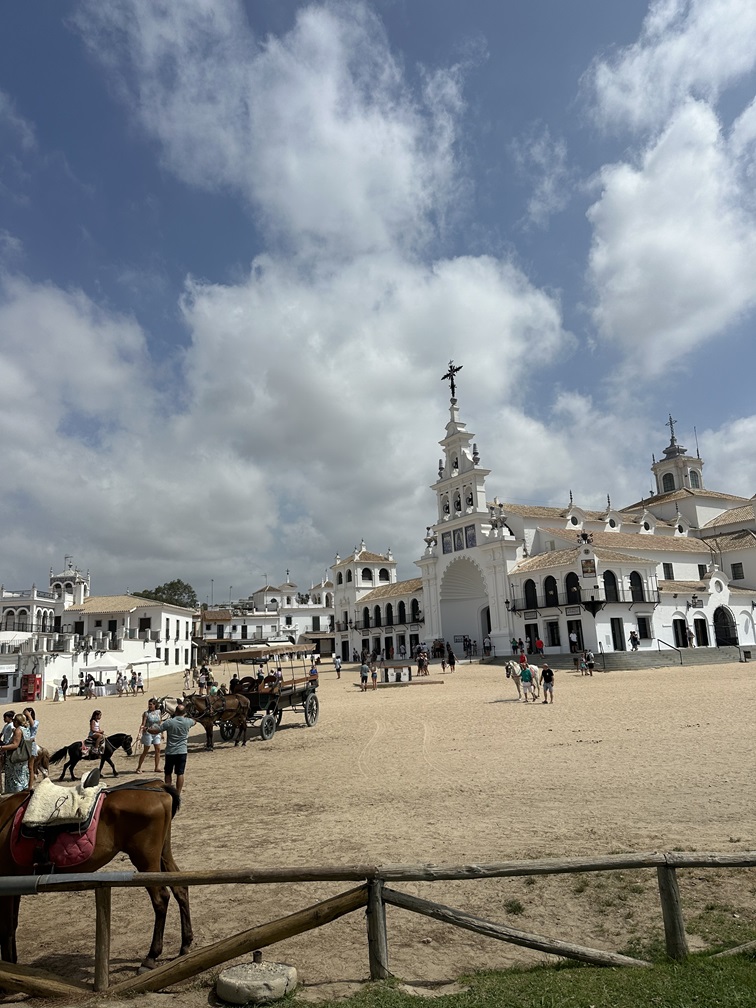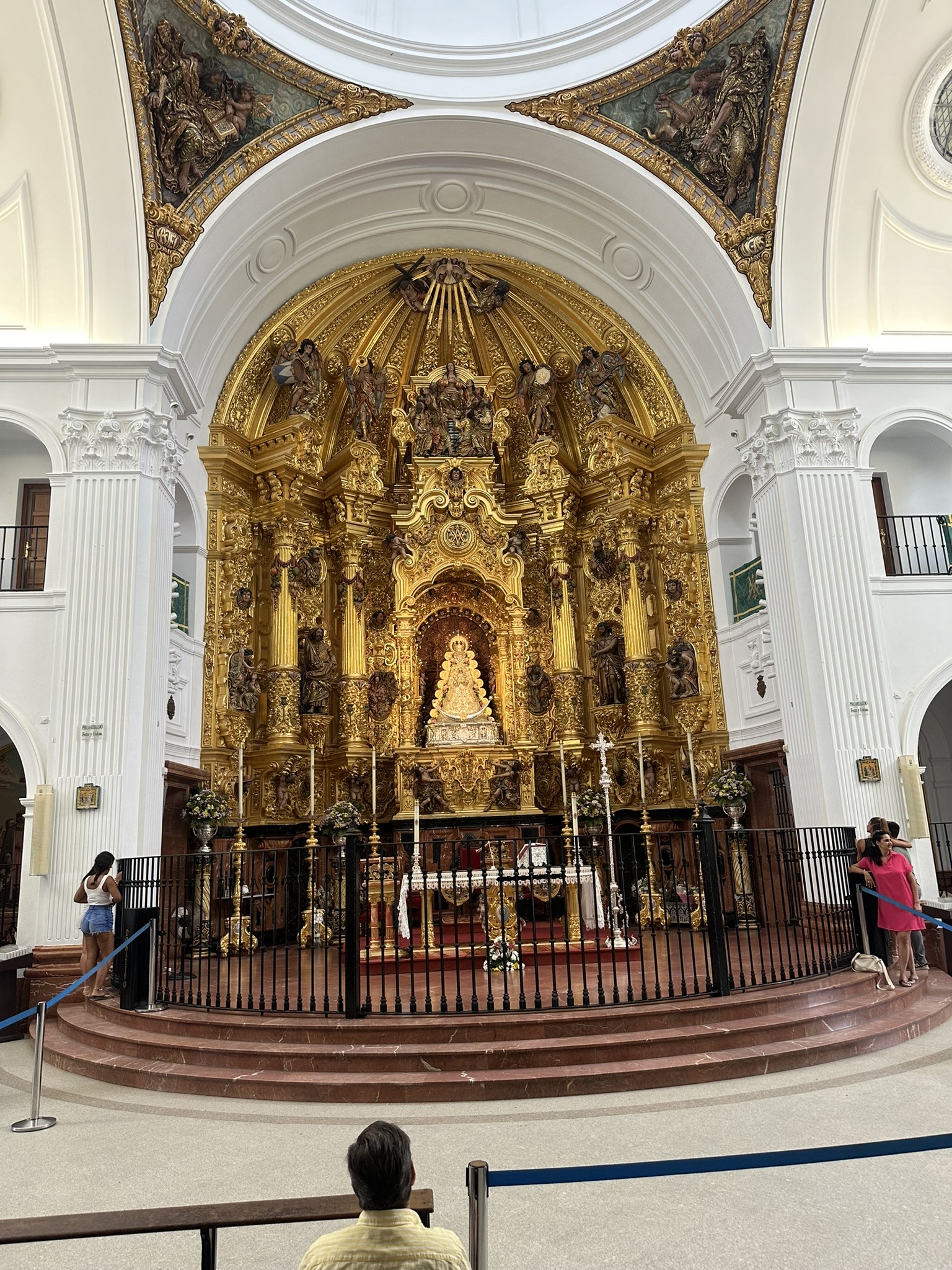Our Lady of El Rocío (Spain)

Historical background
Legend has it that in the 13th century a local shepherd found a carved image of the Virgin Mary in a tree trunk. He took it with him with the intention of taking it to Almonte, but fell asleep on the way. When he woke up, it was gone. He went back to the place where he had found it and there it was again in the tree trunk. A small hermitage was built at the crossroads of several old roads. In 1653, she was named patron saint of the town of Almonte, about 15 km to the north, under the title of Nuestra Señora de las Rocinas, and the Brotherhood of Almonte began making pilgrimages there every September. In 1759, the date was moved to the Pentecost weekend.
The small village of El Rocio is located about 80 km from Seville. You can visit El Rocio and its white church in peace and quiet all year round. However, during the Pentecost weekend, around 1 million people gather for the largest pilgrimage in Spain called the "Romeria del Rocio". Pilgrims from all over Andalusia, dressed in traditional costumes, come to the village on horseback, in carriages or on foot to honour the Virgin, who they also call "Blanca Paloma". It is one of the most striking expressions of Andalusian culture and tradition and attracts thousands of pilgrims every year from all over Spain and abroad.
The devotion to the Virgin of Rocío dates back to the 13th century, when a hermitage was built in her honour in the Guadalquivir marshes, near what is now the village of Rocío. Since then, the Virgen del Rocío has become one of the most important devotions to the Virgin Mary in Andalusia and the Romería del Rocío has become one of the most authentic expressions of Andalusian popular religiosity.
The celebration of the Rocío Pilgrimage takes place every year during the weekend of Pentecost Sunday, the fiftieth day after Easter Sunday, and is celebrated to commemorate the coming of the Holy Spirit to the apostles and the founding of the Christian Church. During the Rocío Pilgrimage, thousands of pilgrims make a pilgrimage to the village of Rocío to pay homage to the Virgin of Rocío.
The first sanctuary was built by Alfonso X "the Wise" between 1270 and 1300, after the conquest of the country from the Arabs, and is mentioned in the "Book of the Hunt". The building, which is "ten varas long, facing south, with a wooden saddle roof and atrium", was built in the Mudejar style.
The current sanctuary was designed by the architects Alberto Balbontín Orta and Antonio Delgado Roig and has a Latin cross plan, three naves, a clerestory and the main chapel at the end. The sanctuary was consecrated on 12 April 1969 by the then Bishop of Huelva, Monsignor José García Lahiguera, and on Sunday 13 the Virgin of El Rocío entered her new chapel for the first time.
1999 marked the inauguration of the new altarpiece and the chapel of the Virgin, an impressive work that serves as a worthy home for the Blanca Paloma (White Dove).
The miracle of El Rocío
Padre Quevedo tells of the miraculous recovery of his niece Suzanna, who had previously suffered from cancer. She had been diagnosed with a brain tumour. Just a few days after this terrible news, Suzana had to undergo a very dangerous operation on the back of her head, right where all the nerves come together and the danger was immense. During the entire operation, her mother Pepi held a gold medal of the Virgin of El Rocío in her hand. She squeezed it so hard that blood eventually dripped from her hands.
In the end, the operation was so successful that Suzanna recovered 100%. Suzanna tries to hold back her tears. "That's why I'm here," she says confidently, "that's why I go on a pilgrimage to El Rocío every year since this operation to express my gratitude to the Saint for saving my life."
